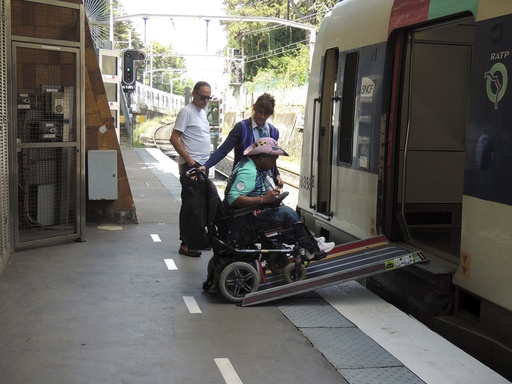Ndieme Lame, a 57-year-old wheelchair user, commutes daily to the Stade de France as a volunteer during the Olympics, amazed by the improved accessibility of public transit in Paris. The city has made efforts to enhance accessibility for people with disabilities ahead of the Olympics and Paralympics, such as an online system to book assistance at train stations. However, challenges persist, especially in the underground Metro system where most stations are not wheelchair accessible. Lame is concerned about the sustainability of assistance post-Paralympics.
Accompanied by AP journalists, Lame traveled from her home in Porte de Versailles to the Stade de France in Saint Denis. Wearing the Paris 2024 volunteer attire, Lame maneuvered through her commute smoothly, albeit with occasional reliability issues with elevators. Despite maintenance affecting several lifts in Paris stations, Lame finally arrived at the stadium after transferring between trams and commuter trains with assistance.
One obstacle Lame faced at the Stade de France was accessing the stadium on a pedestrian bridge with stairs and no elevator. However, Hugues Valet, an aspiring para-triathlete using a wheelchair, was pleasantly surprised by the assistance available at the stadium entrance. International Paralympic Committee President Andrew Parsons commended Paris for enhancing overground transport accessibility but acknowledged the frustration regarding the inaccessible Metro stations.
Paris has made substantial investments in accessibility improvements since winning the 2017 Summer Games bid, with all bus routes and tram lines now wheelchair accessible. The city allocated 125 million euros to further these efforts and created 17 enhanced accessibility districts with adapted public facilities and shops. Lamia El Aaraje, deputy mayor of Paris, stated that the city is fulfilling its promise to transform and enhance accessibility across the city.


